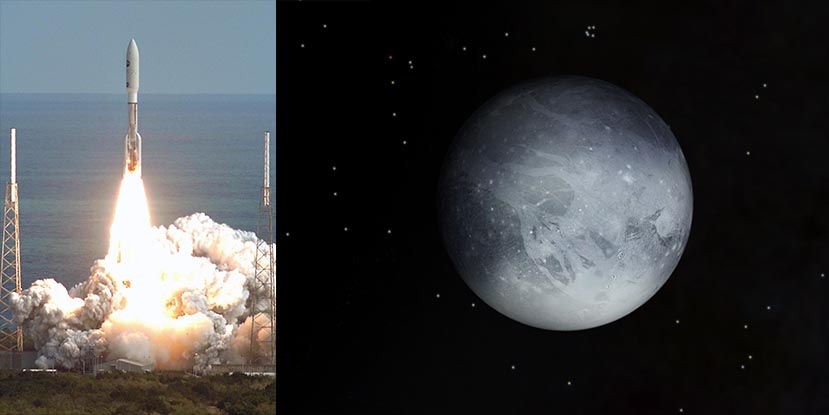At 3 billion miles away, and at about two-thirds the size of our moon, there’s never been really good pictures of Pluto taken before. Even with the Hubble telescope, Pluto usually ends up looking like a pixelated orb. Scientists are hoping all that changes within a few weeks though, as a spacecraft launched in January 2006 prepares for a fly-by of the small, icy dwarf planet.
The New Horizons probe is bearing down on Pluto at 32,000 miles an hour – just slightly faster than some drivers on Chicago’s expressways. The robotic probe, which weighs half a ton, will fly past Pluto at 7:49 a.m. Eastern time on July 14, cameras and instruments ravenously gobbling data. At least that’s what scientists are hoping for.
New Horizons is the fastest spacecraft ever launched from Earth. At the rate of speed that New Horizons is traveling, a collision with something even the size of a grain of rice could be devastating.
Alan Stern is the principal investigator — the leader — of the New Horizons mission, and says, “We are running the anchor leg in a 50-year exploration of the planets. I tell people, this is it, it’s the last picture show, it’s the last train to Clarksville. Better watch!” Never at a loss for a colorful, descriptive way of saying things, Stern says:
This is a moment. People should watch it. They should sit their freakin’ kids down and say, think about this technology. Think about people who worked on this for 25 years to bring this knowledge. . . . It’s a long way to go to the outer edge, the very edge of the solar system.
Even at the speed of light, which is 186,000 miles per second, a message sent to or from the New Horizons craft takes four and a half hours to arrive. When sending a message, the scientists have to aim for where the spacecraft will be at that time, not where it is currently at.
New Horizons will come within 7,800 miles of Pluto’s surface at its closest approach. Because of its configuration, New Horizons cannot observe Pluto and simultaneously transmit data to Earth. Usually, it does one or the other. However the flyby is so fast, and such a precious opportunity, that the spacecraft will focus entirely on Pluto during the July 14 encounter, at the cost of leaving the scientists and engineers back home in suspense.
Scientists and prominent officials will have a countdown to the flyby, and they will celebrate at 7:49 a.m. that day, but they won’t know until late that evening whether the spacecraft survived the encounter. They’ll get a simple batch of data, basically a health report, at around 9 p.m.
The technology exists for a spacecraft to travel to a distant planet like Pluto, land, take samples, and return to Earth using a nuclear reactor power engine. However, as you would expect the cost is pretty high, and the problem lies in getting NASA to approve such a trip.
Would you take a trip to another planet, even if you knew it was a one-way trip? Give us your space exploration dreams here or on our social media links.
[button link=”http://www.washingtonpost.com/national/health-science/pluto-poised-for-a-star-turn-as-nasa-probe-races-toward-historic-encounter/2015/06/20/46ffd54e-0d1f-11e5-a0dc-2b6f404ff5cf_story.html” icon=”fa-external-link” side=”left” target=”blank” color=”285b5e” textcolor=”ffffff”]Source: Washington Post[/button]Last Updated on November 27, 2018.










